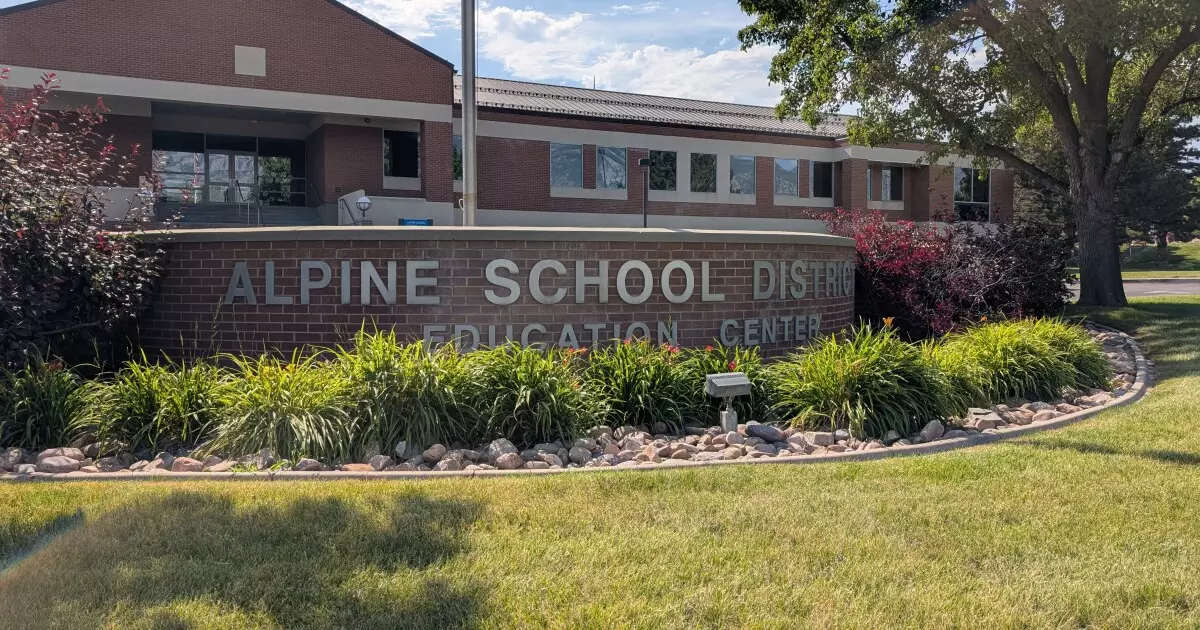Utah’s Alpine School District’s latest move to issue a $201 million bond is portrayed as a necessary investment to keep pace with burgeoning student populations and infrastructure needs. Yet, a closer examination reveals that this seemingly forward-looking financial strategy may be masking deeper issues. This borrowing spree, justified by the district’s supposed growth, actually exposes underlying vulnerabilities rooted in overextension and misaligned priorities. The assumption that growth equates to long-term stability is shortsighted at best; in reality, it risks saddling taxpayers with an unsustainable debt burden that could constrain future budgets and compromise educational quality.
The rated AA-plus by Fitch Ratings, though seemingly robust, carries a negative outlook—a stark reminder that even “high” credit ratings are conditional and susceptible to sudden downgrades. Such downgrades are often triggered by rising liabilities and overly optimistic growth projections. Relying on debt instruments to fund new schools while attempting to project stable finances ignores the complexities of fiscal resilience, especially amidst economic uncertainties. The danger lies in elevating short-term borrowing as a panacea, neglecting the necessity for disciplined financial planning that prioritizes efficiency and long-term sustainability.
The Risks Embedded in the District Split
The planned division of Alpine into three autonomous districts sounds administratively appealing but conceals considerable structural risks. The division’s reliance on proportional debt allocation based on assessed values assumes a straightforward transition—yet history suggests that organizational splits tend to be messier, and financial liabilities often become contentious battlegrounds.
Moody’s rating acknowledges the “transition risk”—a polite way of recognizing the potential chaos and confusion that can accompany such disaggregation. The fact that the new West District is designated as having a “weak” long-term liability profile reveals that the entire structure may be built on shaky financial ground. These debts, initially paid by Alpine, will shift to the new districts—yet, the expectation that they can absorb this weight without compromising educational standards is optimistic. The fiscal strain could be severe, especially if enrollment forecasts do not match reality or if political consensus fractures during critical financing phases.
The move also raises profound questions about governance and accountability. Shifting debts and responsibilities to newly formed districts may undermine community oversight, causing taxpayers to foot bills that are not fully transparent or accountable. It’s not merely a fiscal concern but a matter of democratic responsibility: can these new entities genuinely manage their own financial futures without undermining the stability of the entire region?
Political and Legal Frameworks: A Double-Edged Sword
The legal underpinnings—such as Senate Bill 188—facilitate these bonds by removing operational caps, effectively enabling a borrowing binge. While intended to empower local entities to finance necessary improvements, this legislation also lowers the bar for fiscal prudence. The rush to issue debt without voter approval raises questions about democratic oversight and whether the public is genuinely informed about the long-term consequences.
This legislative environment incentivizes districts to leverage debt as a shortcut to infrastructure development, often at the expense of fiscal caution. It creates a scenario where districts can appear proactive and growth-oriented but may be neglecting the more essential issue of fiscal discipline. Over time, such unfettered borrowing could create a debt trap, limiting future flexibility and forcing education budgets to lean heavily on bond payments rather than program investments.
The Broader Implications for Utah and Beyond
While Alpine’s situation is specific, it highlights a broader trend across many jurisdictions: the allure of quick fixes through debt issuance as opposed to addressing fundamental fiscal issues genuinely. The district’s strategy seems to prioritize infrastructure expansion, but this can come at the expense of core educational priorities—quality, teacher retention, and student well-being.
Furthermore, the reliance on investment banking entities like Morgan Stanley underscores the increasing commodification of public education financing. Such deals often serve the interests of financial institutions more than the communities they supposedly benefit. The complex structure of serial maturities, lease agreements, and credit ratings can obfuscate the true cost of borrowing, making it harder for voters and policymakers to grasp the long-term implications.
In essence, what appears to be a solid growth plan rooted in responsible governance is, at a critical glance, a politically expedient solution that risks foregoing fiscal conservatism. Balancing the need for infrastructure with prudent financial management is crucial—and Utah’s Alpine district has yet to demonstrate that it can strike that balance without exposing itself and its taxpayers to unnecessary peril.

